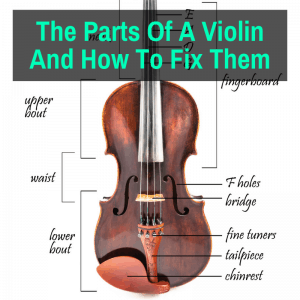
Or simply curious?
Either way, you’re in the right place.
Mastering a violin’s design goes hand in hand with mastering how to play it.
I also realize that your violin may need repairing every now and then, and I want to make sure you’re prepared for this.
Throughout this article, I’ll throw in some vital information on each part of the violin, plus some tips on what to do if you think the part of is damaged or broken.
So, let’s get started!
Table of Contents
- 1 Parts Of A Violin Labeled
- 2 Parts Of The Violin: Related Questions
- 3 Violin Parts: Final Thoughts
Parts Of A Violin Labeled
The Scroll
The scroll is the decoratively carved piece of wood at the head of your violin, opposite where you rest your chin.
Theoretically, the scroll has no effect on the actual sound of the violin and how you play it. The reason many violinists care about it is because some think the level of intricacy of the scroll can determine how good a violinist you are!
How To Fix It
If it’s broken above the tuning peg, it shouldn’t affect the performance of your violin. Super glue it back on and you’ll have no issues.
The Tuning Pegs
The tuning pegs lie just below the scroll on your violin. They have one vital role: to alter the tuning of the strings when twisted.
How To Fix Them
If your violin has literally snapped around the tuning pegs, only an experienced repair man will be able to save it. If one of your tuning pegs has fallen off, simply screw it back on.
Sometimes the pegs can be too loose or too tight. Loose pegs are especially common and lead to your instrument constantly going out of tune. Learn how to fix slipping pegs on the violin here.
The Nut
The nut is the small piece of wood that supports the strings right before they enter the tuning box.
How To Fix It
Your best solution is to squeeze a couple of tiny dots of glue onto the underside of the nut to stick it back down.
The Strings
The strings are responsible for creating the actual violin sound. They are tuned to G, D, A and E, from lowest to highest. Without the strings, all you’ve got is a piece of nicely crafted wood.
How To Fix Them
Thankfully, the strings are easily repairable. Here’s a video that shows exactly how it’s done. This post covers it as well.
The Neck
The neck is the long piece of wood that sits below the strings and the fingerboard. It carries all the tension in the strings.
How To Fix It
It’s best to take your violin to a repairman for this particular issue, given the importance of having a sturdy neck to carry the stress of the strings.
The Fingerboard
The fingerboard is the smooth black playing surface that sits between the strings and the neck. The point at which you press down on the fingerboard will determine what note you are playing.
How To Fix It
If you have a clamp lying around, this repair is straightforward. All it requires is super gluing the fingerboard down against the neck, and clamping it down to keep it in place as the glue dries. Read more about this repair here.
The Body
The body of your violin is the part that amplifies the sound. Without it, all you really have is a harp! Damage to the body can cause all types of issues, like your violin squeaking when you play it.
How To Fix It
Go straight to the repairman. Don’t risk trying to fix this part yourself!
The Sound Post
The sound post rests inside the body of your violin. It spans the space between the front-piece and back-piece. Its positioning is absolutely critical. Moving it by a small distance can make a huge difference to the quality of sound.
How To Fix It
This is a delicate job. Like many violin repairs, it’s safest to go to a repair shop.
The F Holes
These are the two f-shaped openings carved into the main body of the violin. As you play your violin, the sound from the strings reverberates through these f holes. Angle yourself so that the F holes are facing your audience and they’ll experience the best sound possible!
How To Fix Them
If you’ve just got a small chip on your f hole, it won’t need repairing.
The Bridge
The bridge sits directly between the two f holes. The shape of the bridge is dependent on what type of player you are.
Are you a classical violinist? You’ll prefer a curvier bridge. This makes it easier for you to hit the right notes without scraping across the wrong string. Country player? You’ll prefer a flatter bridge, so that you can play multiple strings at once.
If you want to attach a violin mute, you put it on the bridge. Some types of mutes, like torte mutes, can hang loosely on the strings between the tail piece and the bridge, when they are not in use. Then you slide them upward and attach them to the bridge when you want to use them.
How To Fix It
Check out this video below to see exactly what you need to do.
The Fine Tuners
The fine tuners give you the option of altering the tune of your strings by a very small fraction.
How To Fix Them
Have a look at this video, if you want to repair your fine tuners yourself.
The Tail Piece
This is what the strings are attached to at the bottom of the instrument.
How To Fix It
A repair shop will usually fix this problem for you on the spot. However, if you want to learn to fix it yourself, then check out the explanation in this thread.
The Chin Rest
This is the part on which you, surprisingly, rest your chin! It helps you hold your violin correctly and will support the pressure applied to your chin.
How To Fix It
Chin rests aren’t part of the actual body of the violin. They are added separately. If your chin rest breaks, you can buy a new one from any instrument store or online.
The Shoulder Rest
This is an optional component that cushions your shoulder where the violin rests on it. Playing the violin without a shoulder rest is perfectly fine. Shoulder rests help some people, but they hurt others.
Your best bet is to try playing with and without a shoulder rest and seeing which way is more comfortable for you. Don’t buy the best shoulder rest for violin right off the bat. You’re fine with a cheap one at first, to see if you prefer using one.
How To Fix It
Similar to the chine rest, if the shoulder rest breaks, simply buy a new one. It is not an actual part of the violin and can easily be replaced.
Parts Of The Violin: Related Questions
What Is The Nut Of A Violin?
The nut combines with the bridge to define the length of the vibrating section of the strings. It is located on the opposite side of the strings from the bridge, which means it is on the end closest to the scroll. It supports the strings on that end, setting their height above the fingerboard and their spacing from each other.
The nut is made from a hard material, like cow bone, ivory, Corian, brass, ebony or plastic. It generally has notches that hold the individual strings, setting their distance from each other.
What Are The Parts Of A Violin Bow?
The bow is much less complex than the violin itself, so it has fewer parts. That said, you may be surprised at how many different part a bow does have.
The different parts of a violin bow are the bow stick, the bow hair, the tip, the frog, the screw, and the grip (made up of the winding and the pad). For most of those, the function or purpose is readily apparent from the name.
The two exceptions are the frog and the screw. The frog is the part at the base of the stick that holds the bow hair (the tip does the same on the other end). The screw is used to tighten or loosen the tension in the horse hair.
What are violin bows made of? The hair is usually made from horse hair, but not always. The stick is made from wood. They type of wood varies, as does the frog material.
Why Are There No Frets On A Violin?
Violins do not have frets for one big reason: flexibility. When an instrument has frets, it is those frets that stop the strings, but on a violin you use your fingers to stop the strings.
Frets may help you learn the correct finger positions when you are starting out, but once you have the fundamentals down, they would just get in the way. They would make it much more difficult to perform more advanced techniques, like violin vibrato or slides.
Violin Parts: Final Thoughts
Now that you know all the different parts of a violin, don’t you feel like you understand the instrument a bit better? Not only that, you should now be able to handle basic repairs yourself.
Of course, any complicated repairs are best left to a professional. Yes, it will cost you, but it will cost far more if you screw up your instrument while trying to fix it.
I hope this article has taken you a step closer to mastering your instrument! If you have any questions, please feel free to comment below.
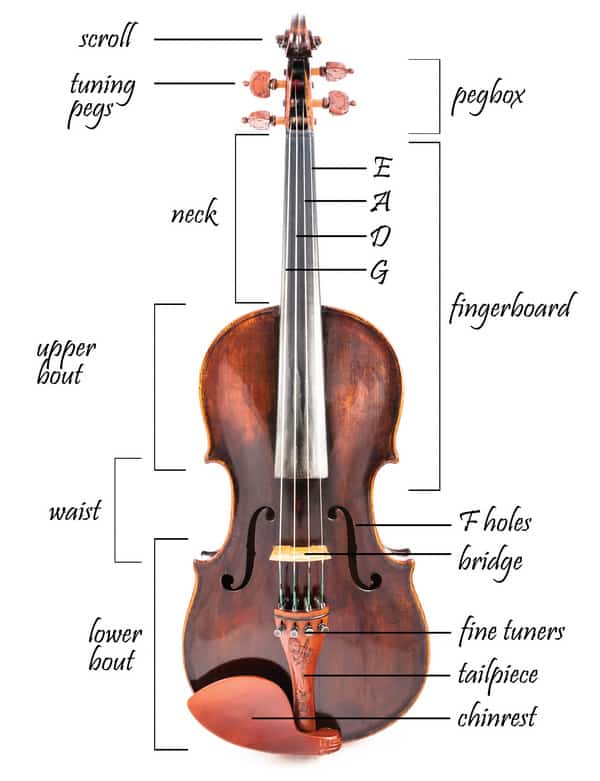
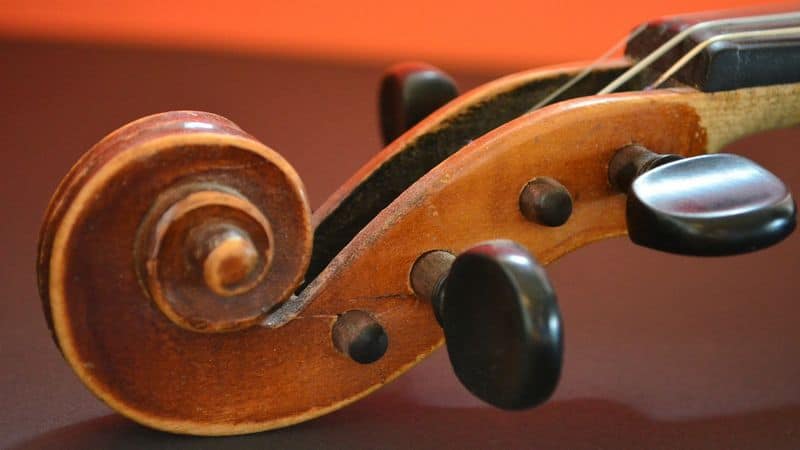
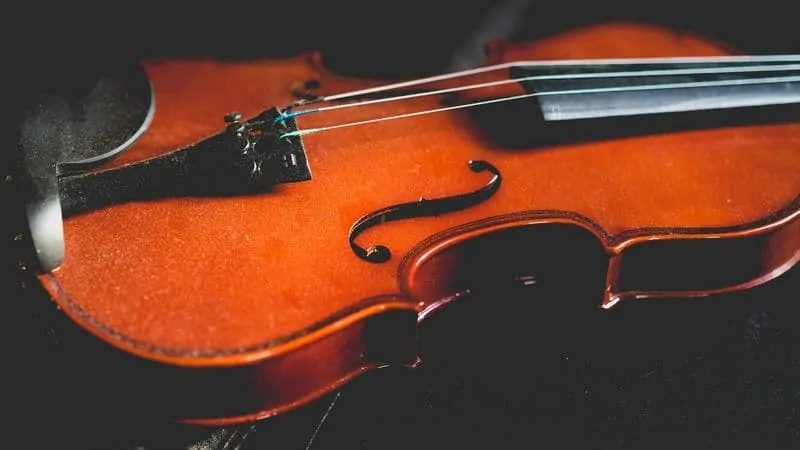
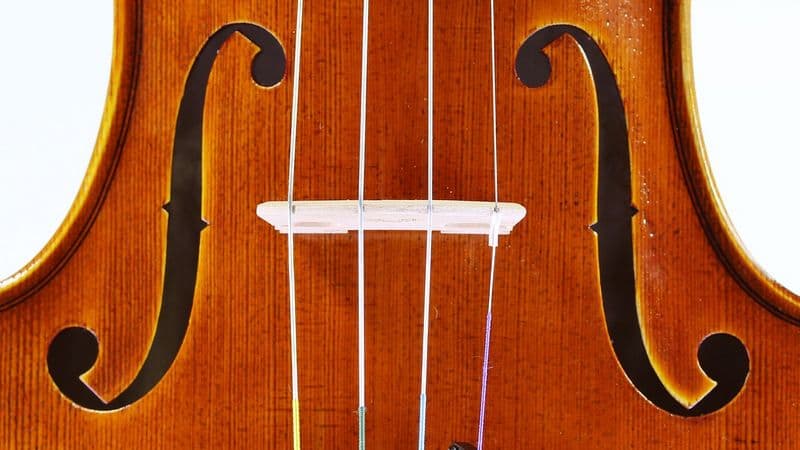
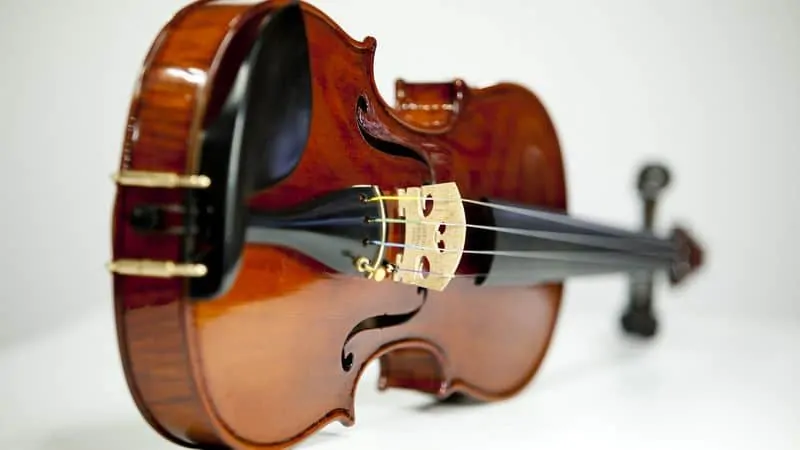
Bought a n old violin with Vuillaume a Paris on the back, also a paper label inside .
Needing serious overhaul and parts..
would it be worth it to fix it?
I am not musician, but love music and brought it home out of mercy!
If photos sent, could you advise the cost of repair and or someone near me that might be able to do it if you do not?
Thanks so much for the great info on your site.
I did ask Pagie’s to fix my Brother’s Violin. This is Very good to Read on How to Repair and Fix up on a Violin If needs repair if It Got Damaged.